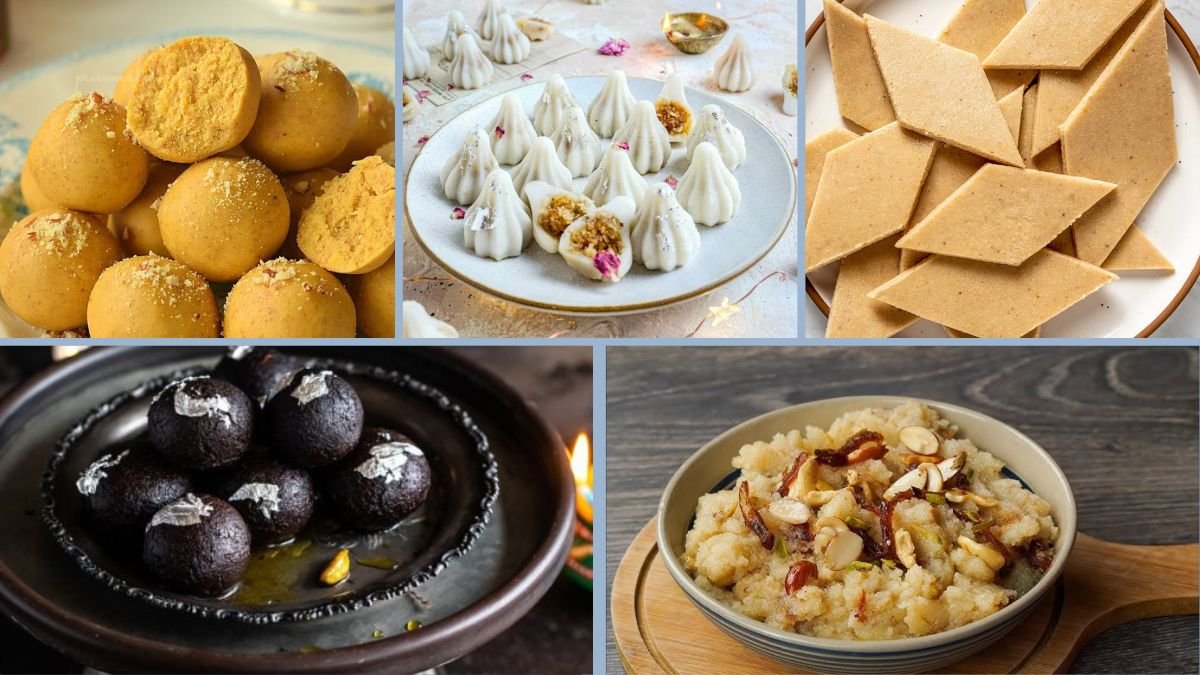Indian festivals are vibrant celebrations of life, filled with colors, rituals, family gatherings — and above all, food. Central to every Indian celebration is the indulgence in traditional desserts, which carry generations of culinary wisdom and cultural heritage.
This article presents “Our 8 Best Festive Indian Desserts of All Time”, with a focus on recipes that are 100% vegetarian and free of non-veg ingredients (including eggs and gelatin). Each dessert has stood the test of time, evoking nostalgia, joy, and festive spirit in every bite.
1. Gulab Jamun
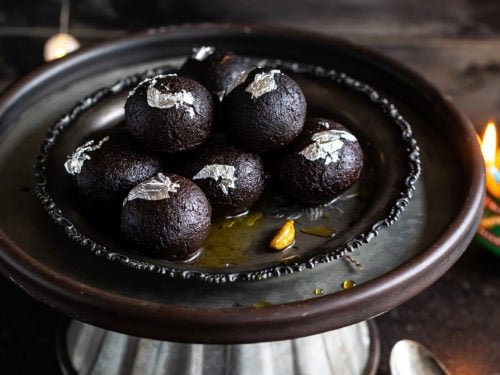
Why it’s iconic:
No Indian festival is complete without this soft, syrup-soaked dessert. Gulab Jamun is rich, melt-in-the-mouth, and infused with rose-scented sugar syrup.
Key Ingredients:
- Khoya (milk solids)
- All-purpose flour (maida)
- Baking soda
- Cardamom powder
- Sugar, water, rose water, saffron
Preparation:
- Knead khoya with flour and baking soda into a soft dough.
- Shape into small balls and deep-fry until golden brown.
- Soak in warm sugar syrup flavored with cardamom and rose water.
Festive Touch:
Garnish with slivered pistachios or edible silver leaf (varak).
Tip:
Use soft khoya and don’t overcrowd the oil while frying to ensure even cooking.
2. Kaju Katli (Cashew Fudge)
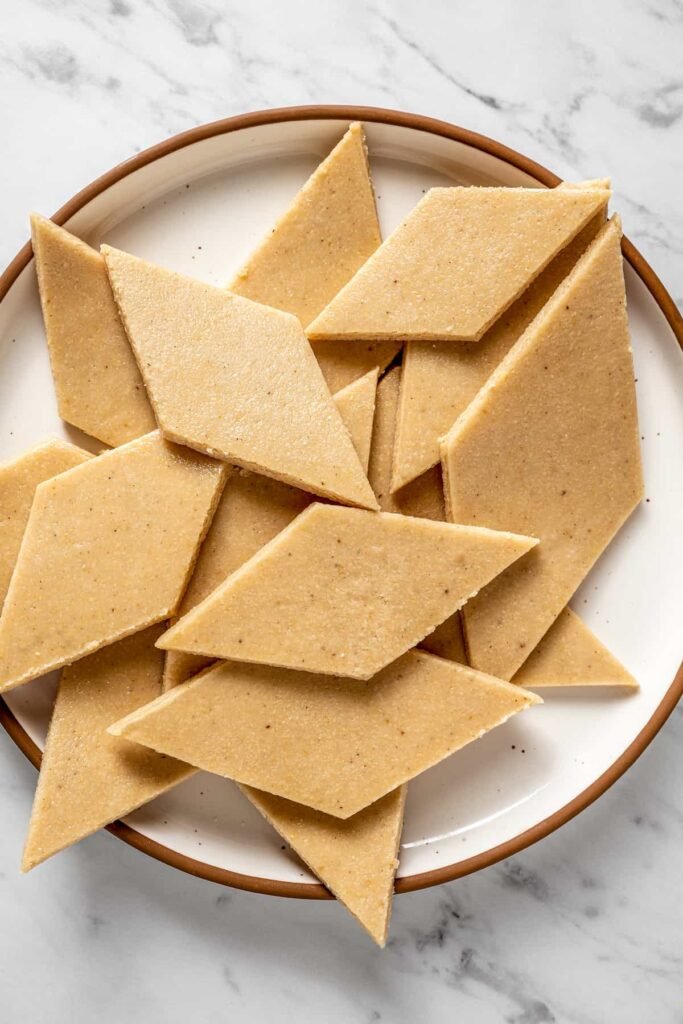
Why it’s a crowd favorite:
Known for its elegant diamond shape and melt-in-the-mouth texture, Kaju Katli is a festival staple — especially during Diwali.
Ingredients:
- Cashew nuts (powdered)
- Sugar
- Water
- Cardamom powder
- Ghee (minimal, optional)
- Edible silver leaf (optional)
How to Make:
- Grind cashews into a fine powder.
- Cook sugar with a little water to form a one-string consistency syrup.
- Mix in cashew powder and stir until the mixture thickens into a dough.
- Roll out and cut into diamond shapes.
Why it’s great:
Naturally gluten-free and protein-rich, it also stores well for days.
3. Rasgulla
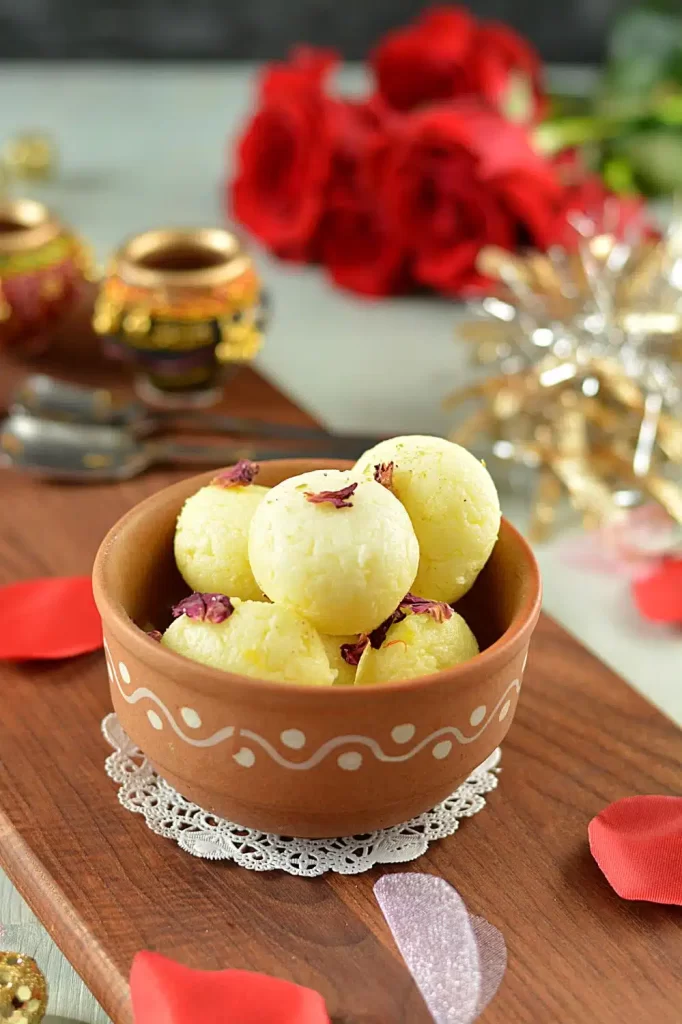
Why it’s special:
Originating from Bengal, Rasgulla (or Rosogolla) is a spongy, juicy dessert made from chenna (Indian cottage cheese). Light and refreshing, it’s perfect for festivals like Durga Puja and Holi.
Ingredients:
- Fresh chenna (paneer)
- Water
- Sugar
- Rose water or cardamom (optional)
Method:
- Knead chenna until smooth and form into small balls.
- Boil in sugar syrup for 15–20 minutes until puffed and spongy.
Tips for Perfection:
- Use fresh lemon juice to curdle milk for chenna.
- Kneading is crucial — it ensures smooth, crack-free rasgullas.
Serving Suggestion:
Serve chilled with a spoonful of syrup and a hint of rose water.
4. Besan Ladoo
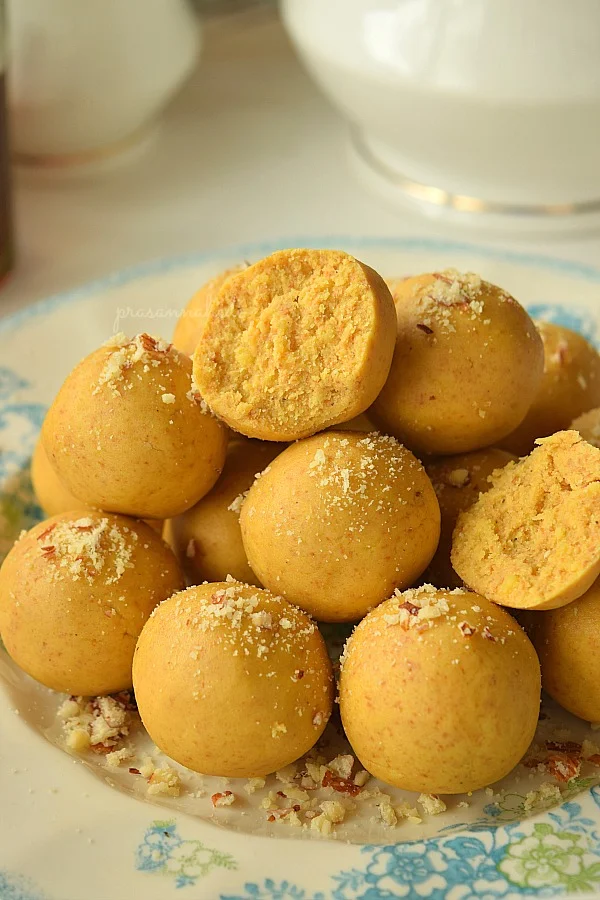
Why it’s festive:
With its nutty aroma and grainy texture, Besan Ladoo is one of the most beloved Indian sweets, especially during Ganesh Chaturthi and Diwali.
Ingredients:
- Gram flour (besan)
- Ghee
- Powdered sugar
- Cardamom powder
- Chopped nuts (optional)
How to Make:
- Roast besan in ghee on low flame until golden brown and aromatic.
- Cool slightly, then mix in powdered sugar and cardamom.
- Shape into balls while warm.
Pro Tip:
Slow roasting is essential for flavor. Don’t rush the process.
5. Malpua with Rabri
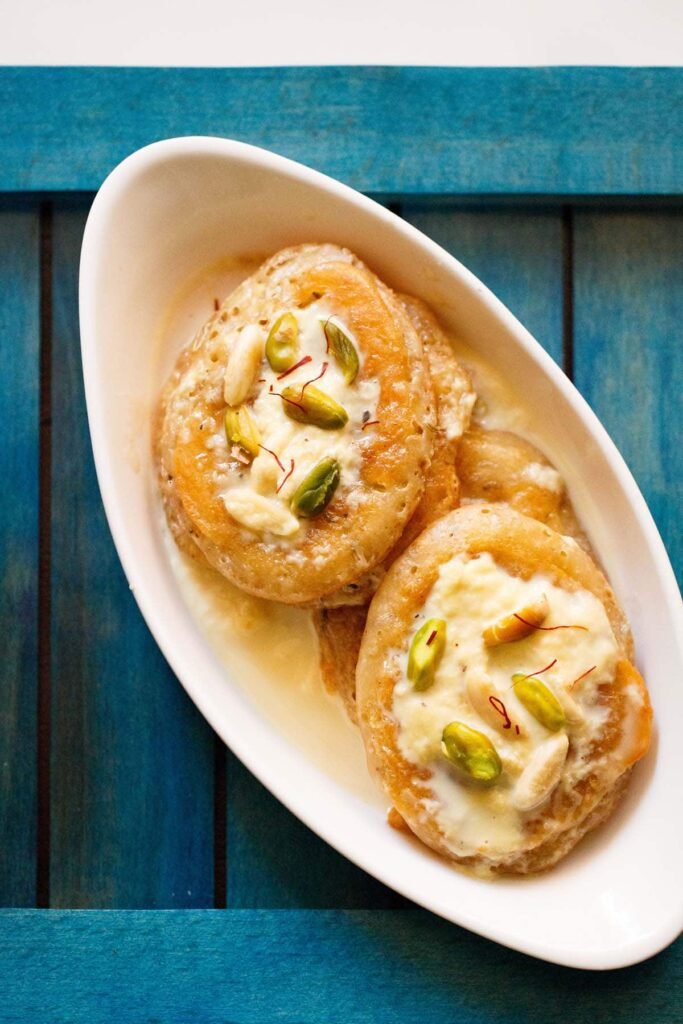
Why it’s indulgent:
Malpua is a traditional North Indian fried pancake, soaked in sugar syrup and often paired with thick, sweetened milk (rabri). Popular during Holi and Ramadan.
Malpua Ingredients:
- Maida (all-purpose flour)
- Semolina
- Fennel seeds
- Milk
- Sugar syrup
Rabri Ingredients:
- Full-fat milk
- Sugar
- Cardamom
- Saffron
- Chopped nuts
How to Make:
- Prepare a pancake batter and let it rest.
- Fry small spoonfuls until golden.
- Dip in warm sugar syrup.
- Top with chilled rabri and nuts.
Flavor Tip:
Add a pinch of fennel or crushed black pepper for a unique touch.
6. Sooji Halwa (Sheera)
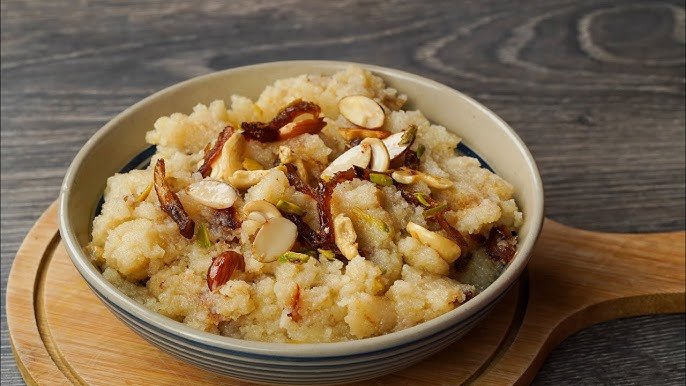
Why it’s comforting:
Simple yet soul-satisfying, Sooji Halwa (also known as Rava Sheera) is made during Navratri, Satyanarayan puja, and other religious ceremonies.
Ingredients:
- Semolina (sooji/rava)
- Ghee
- Sugar
- Water or milk
- Cardamom
- Cashews and raisins
Preparation:
- Roast semolina in ghee until aromatic.
- Boil water with sugar and cardamom.
- Combine carefully (it splatters), stir continuously until thick.
- Garnish with fried nuts.
Variations:
- Use milk instead of water for richness.
- Add saffron for a festive color and aroma.
7. Badam Halwa (Almond Pudding)
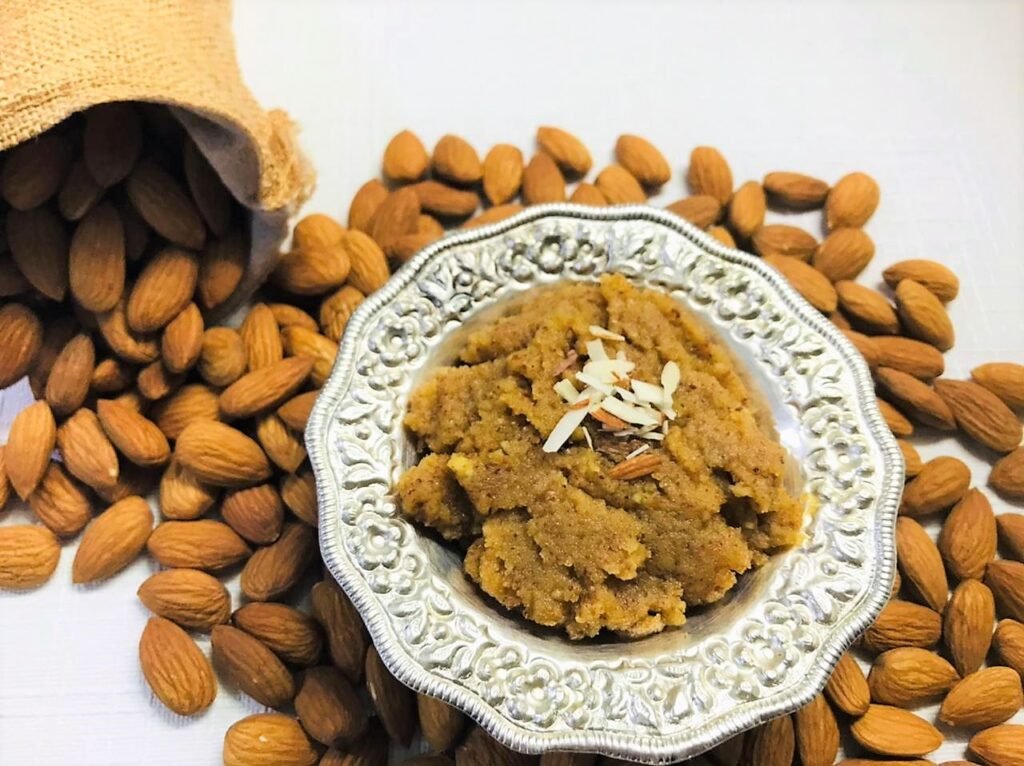
Why it’s regal:
Rich, smooth, and luxurious, Badam Halwa is often served at weddings, religious events, and major festivals like Diwali and Pongal.
Ingredients:
- Blanched almonds (ground to paste)
- Ghee
- Sugar
- Milk or almond milk
- Cardamom powder
- Saffron strands
Preparation:
- Soak and peel almonds, then grind to a smooth paste.
- Cook in ghee, adding sugar and saffron-soaked milk.
- Stir constantly until the mixture thickens and leaves the sides of the pan.
Serving Tip:
Serve warm, garnished with slivered almonds and saffron strands.
Health Note:
Use jaggery instead of sugar for a healthier twist.
8. Modak (Steamed & Fried Versions)
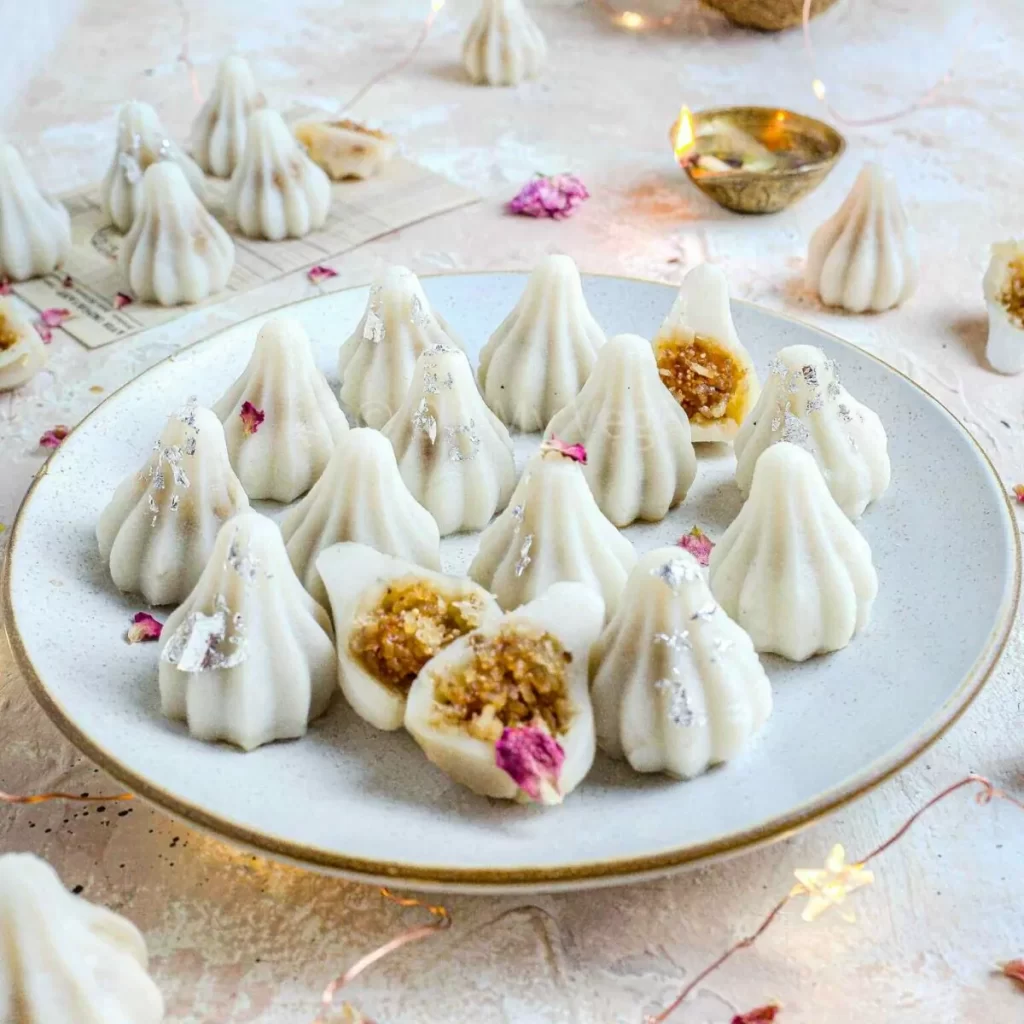
Why it’s spiritual:
Modaks are Lord Ganesha’s favorite sweet and are traditionally prepared during Ganesh Chaturthi. They are a symbol of blessing, prosperity, and devotion.
Ingredients for Filling:
- Fresh grated coconut
- Jaggery
- Cardamom
- Poppy seeds (optional)
- Nuts
For Outer Shell:
- Rice flour (for steamed version)
- Wheat flour or maida (for fried version)
Steamed (Ukadiche Modak):
- Cook rice flour dough and shape into cups.
- Fill with coconut-jaggery mixture.
- Steam until shiny and cooked.
Fried Modak:
- Use wheat flour to make stiff dough.
- Fill, shape, and deep fry until golden.
Flavor Twist:
Add saffron or nutmeg to the filling for extra warmth.
The Cultural Significance of Indian Desserts
Indian sweets aren’t just about taste — they’re steeped in culture, symbolism, and seasonal relevance:
- Gulab Jamun and Kaju Katli dominate weddings and Diwali celebrations.
- Modaks and Sooji Halwa are offered as prasad during religious rituals.
- Rasgullas and Malpuas reflect regional pride — from Bengal to Rajasthan.
- Badam Halwa and Besan Ladoo embody richness and purity, ideal for gifting.
In Indian households, making sweets is often a shared experience, passed down from one generation to another — a bonding ritual as much as a culinary one.
Why Vegetarian Desserts Matter
All the desserts listed above are completely vegetarian, which is essential in many Indian religious and cultural settings where the use of eggs, gelatin, or animal fats is avoided. These traditional recipes maintain authenticity while respecting spiritual practices.
Benefits of Vegetarian Indian Desserts:
- Faith-friendly: Suitable for prasad or temple offerings.
- Natural ingredients: Most use plant-based ingredients like jaggery, nuts, grains, and dairy.
- Health-conscious: Many can be modified to be vegan or use natural sweeteners.
Conclusion
From the soft decadence of Gulab Jamun to the divine simplicity of Modak, each dessert on this list holds a cherished place in Indian culture and history. These sweets are more than just food — they are offerings of love, joy, and tradition shared during the most important moments of life.
Whether you are a culinary researcher, home cook, or food enthusiast, these 8 best festive Indian desserts offer a window into the rich and varied world of Indian sweets. Each one is vegetarian, timeless, and — most importantly — delicious.
So go ahead, pick a recipe, and bring the spirit of Indian festivals into your kitchen.
